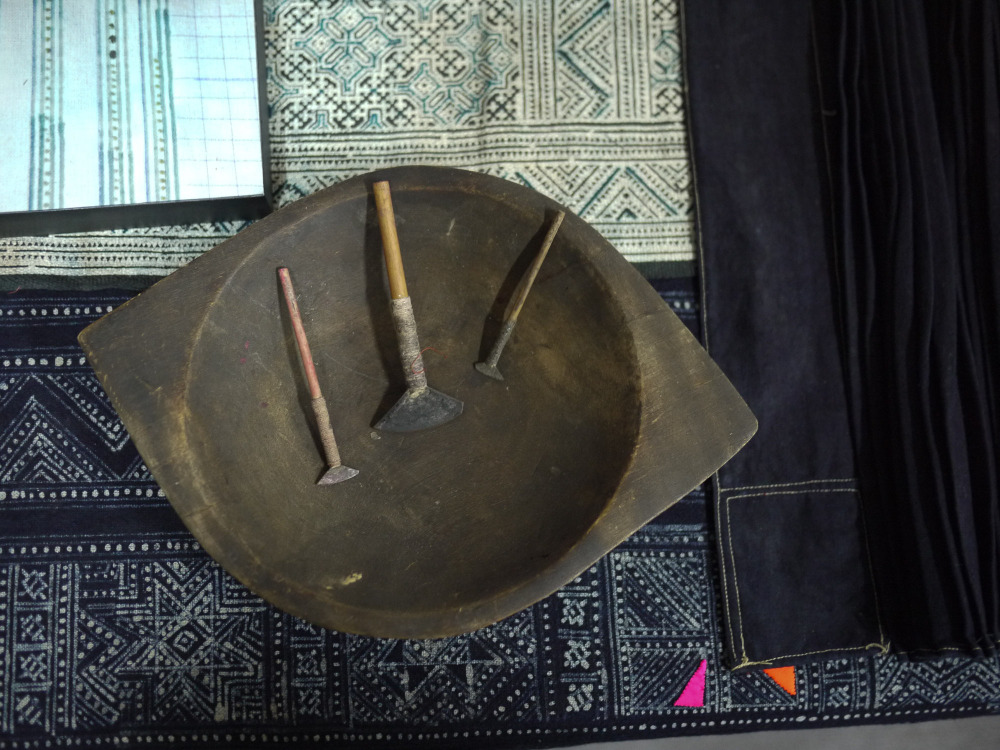The Hmong people of Indochina are known for batik, a wax resist dye technique. Traditionally, motifs are drawn with wax onto hand-spun hemp then dyed with indigo creating an indigo blue cloth with a white pattern. Time-intensive accordion-folded skirts and baby carriers are loving appliquéd and embroidered by Hmong women who pass their skills from generation to generation. These textiles are a visual storytelling device for Hmong people who have no written language.
The examples of batik below were part of an exhibition by Victoria Vorreiter titled From the Hands of the Hills shown alongside the Cloth, Culture, and Development conference held at Chiang Mai Univeristy in August of 2014.

Hmong Batik By Hand
Inexpensive printed versions of this age-old technique are now common, but you can learn how batik is still traditionally handmade in Laos by watching Stitching our Stories: Hmong Batik and the Life of Xiu Xiong by Bao Xiong below, courtesy of our friends at Photo Forward.
Listen as Xiu Xiong of Ock Pop Tok explains the step-by-step process of creating batik and the meanings of motifs like pumpkin seeds and animal teeth.


To learn more about Hmong people I recommend The Spirit Catches You and You Fall Down: A Hmong Child, Her American Doctors, and the Collision of Two Cultures by Anne Fadiman, and Victoria Vorreiter’s book Songs of Memory Traditional Music of the Golden Triangle.

